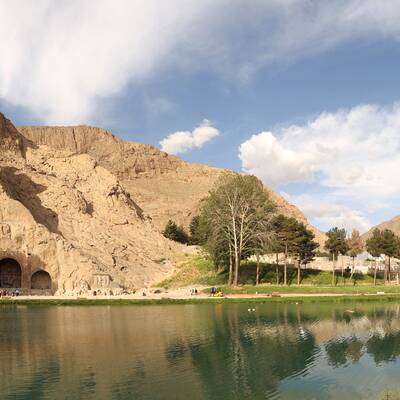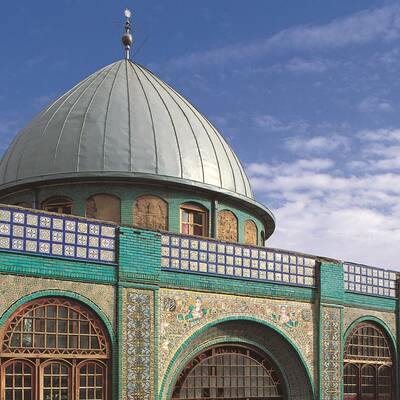The Stone Museum is placed next to the historical area of Taq-e Bostan. It includes over forty stone objects most of which related to Sassanid empire and also to Qajar. There are Sassanid capitals in the museum belonged to a palace which had never been constructed. The motives on the capitals convey symbolic meanings deeply rooted in the religious and mythological beliefs of Sassanid and totally ancient Iranian people; they include: 1. Anahita goddess; immigrated to Iran and inspired by the host society’s culture, Arians incorporated a goddess into their own religion. With the advent of Zoroastrianism, these goddesses were excluded from the new order while they returned after a while because of their high place. Anahita and Sepandārmaz were the main and most reputed among these goddesses. Before the Arians entered Iran plateau, the worship of a great goddess was quite popular among the locals who lived in a Matriarch culture. The worship of the great goddess is related, more than anything else, to agriculture and the agricultural society. 2- Bahram god; people in ancient Iran considered a cloud with no rain to be their worst foe. They granted the title of Great to those gods who attacked the clouds to riddle them forcing them to rain! One of them was Bahram or Vahram who was the greatest warrior god in ancient Iran. 3- Ahuramzada who was later called Ormazd. It means the god of wisdom. He is the only deity who is present everywhere. He has absolute power and is the Almighty God of Zoroastrianism. He represents a lot of attributes; He is not visible by the eye and he is called “light” in Avesta. 4- Tree of life with a range of meanings in science, religion, philosophy and mythology. It represents the eternal relationship of the whole life and universe. The Khosrow II’s bust is shown is another part of the Stone Museum of Taq-e Bostan. The Islamic part of the museum including the remains of a Qajar Palace was extremely damaged during the Iran-Iraq war. This part is placed in an open-air area.










